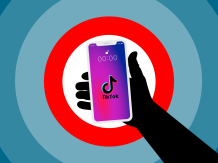If you are running a small business, chances are you are wondering which marketing strategies will help your marketing dollars stretch the furthest. Here are some of the best marketing tactics to help you get the most bang for your buck.
Marketing Tactics for Small Business Owners
The most important first step you can take is to determine your budget and what goals you would like to achieve. For example, are you a new business looking to build brand awareness? Maybe you want to increase your local exposure or capture new leads. Once you have outlined your goals and a realistic budget, it’s time to put your dollars to work. Many of the strategies cost money, but others are free (woo-hoo!).
1. Have a Mobile-Friendly Website
If you don’t have a website, or if your website is outdated and not mobile friendly, you are missing out on a huge opportunity to reach customers! Fortunately, there are a variety of options at different price points to help you get a professional website up and going.
DIY website builders like Wix or Squarespace can be set up and hosted for around $100 a year (plans/costs vary). If you are tech savvy but don’t want to tackle a website build, you can have a professional web design company build your site and then update it yourself to save money. If you don’t want to deal with website updates or want functionality that is beyond the capabilities of a DIY website builder, you can have a website company do the updates for you. While this will cost more, you will have the support and expertise that goes along with using professionals to handle any changes or issues that may arise.
Once you have your website up and going, it will be the foundation for most of your other marketing efforts.
2. Leverage Google’s Tools for Businesses
If you haven’t done so already, set up your Google My Business account. Your GMB profile is what people see in the right-hand column (or front and center in mobile views) when they search for you using Google. This is completely free to do and so important for your online presence.
Once you have a GMB listing, you can control your business information, manage Google reviews, create posts, and take advantage of new Google Maps local search ads.
If you want to move beyond local, Google Ads can help you target your intended audience.
3. Be Active on Social Media Channels (But Not All of Them)
While this is another free way to boost your online visibility, it can admittedly be annoying and time consuming to keep up with. We recommend setting up several accounts to start. These include:
- YouTube (if you have videos)
Begin by posting regularly to each channel. You will soon see that, depending on the type of business you have, you will get more traction from some than others. For example, if you have a local ice cream shop, you may find that you get much more traffic on Facebook than on Twitter. Once you know which channels are most active for your niche, you can shift your focus to those platforms.
We always recommend LinkedIn if you are a B2B for networking and visibility purposes. B2B companies tend to spend more time in LinkedIn as opposed to Facebook or other less professional channels.
You can save time by using free social media tools like Buffer or Hootsuite where you can post in one place and have it go out to multiple social media channels. You can also schedule posts ahead of time, which is handy if you are keeping a busy schedule.

4. Invest in Social Media Advertising
Once you have determined your most successful social media channels, consider running some ads on those channels. Social media ads are more affordable than Google Ads and enables you to target your intended audience in a very granular way. Here is a great post by Sprout Social to help you with your social media advertising strategy.
5. Have a Company Blog on Your Website
As a key SEO tactic, business blogging is a tried-and-true traffic generator for your website. By adding helpful, informative blog posts to your website on a regular basis, you will increase your website traffic exponentially, show up higher in search results, and have fresh content to share on your social media channels. Check out our article on the benefits of small business blogging to see how valuable this method is and how to run a successful blog.
6. Stay in Front of Leads and Current Customers with Email Marketing
Email marketing is a great way to touch base with leads that you have cultivated through your website and other campaigns. It also creates another touchpoint to keep current customers engaged with your business. You can use email marketing for things like:
- Promotions/Sales
- Events
- How-Tos/Tips for using a product or service
- Product reveals
- Company news (awards, new employees, etc.)
- Content promotion (links to new blog posts or videos)
- And more!
7. Create Landing Pages that Convert (and Review Your Current Ones)
Now that you are utilizing your social media channels, PPC ads, and email marketing to encourage leads and customers to take advantage of the great products or services that your business has to offer, it’s time to consider where they are landing when they click on an ad or link.

The construction of your landing page can mean the difference between a sale and a bounce to another page or, worse yet, a competitor.
Here are some basic tips to craft landing pages that enjoy high conversion rates:
Maintain a consistent message: Make sure the ad copy matches up perfectly with the landing page. Don’t send users to your homepage or a service page or “catch-all” page.
Keep the design consistent: If you have created an ad with visual graphics, make sure the design elements carry through to the landing page.
Remove navigation elements: Your landing page should not contain the navigation elements to the rest of your site, as it can distract the user from the action you want them to take.
Keep the text short and to-the-point: Use headings and a minimal amount of text to reinforce your offer, but nothing more. We want those who land on the page to complete the action and not get sidetracked with too much information. Also, use the type of language that resonates best with your customers rather than dry, heady text.
Create a great call-to-action: If you are using “click here” or “submit” buttons, it’s time for an upgrade. Compelling CTAs can go a long way to convert leads into customers. Basecamp has a nice example of this with the call to action for their 30-day sign up.
8. Get Involved in Your Community
If your customer base is local, consider advertising opportunities in your area to boost your brand awareness. For example, you could sponsor a sports team, school, charitable event, or other community event to get your brand out there. Look to support causes that you believe in and those that will be popular with your ideal customer.

9. Customer Referrals
Repeat customers are a great source when it comes to attracting new customers. After all, what better endorsement is there than a referral from a happy customer? Depending on the kind of business you are running, there are a number of ways to incentivize referrals to drum up new leads. These can take the shape of free products, discounts on services, a special gift, or something else to entice your already satisfied customers.
10. Test Out Print Media Advertising / Direct Mailers
While the majority of advertising has moved on to the digital age, there is definitely still a place for ads in local publications, especially for B2C businesses looking to target a local audience. Look for print media in your area, like a local paper or magazine, that is relevant to your audience and try an ad there. Print advertising is less expensive than it used to be, so it can be a technique worth trying to promote your local business.
Direct mailers (like postcards) also still draw attention, especially for businesses like restaurants, salons, automotive repair shops, and home-services providers. Direct mail is best utilized for seasonal offers, new services or products, special promotions, and the like.
11. Network Online and Offline by Joining Professional Groups
For B2B businesses, networking can lead to profitable connections. Networking opportunities such as trade shows, networking events, industry and local small business associations are better known, but you can also volunteer on non-profit boards, for school events, and for community activities to expand your network.
LinkedIn is a great platform for B2B professionals to join industry-specific groups, use the company page to showcase accomplishments, display thought leadership in your industry with posts, connect with other professionals, generate leads, and increase exposure. LinkedIn ads offer unique advantages to B2Bs looking to reach a more professional audience and target leads by job title, function, company size, industry, and more. Studies show that LinkedIn Ads have higher conversion rates than Google Ads.




